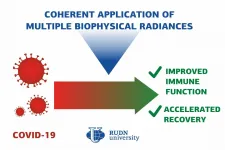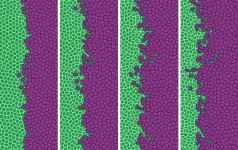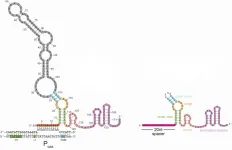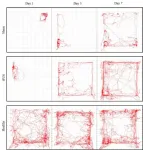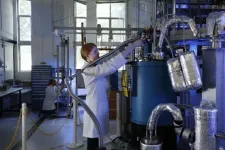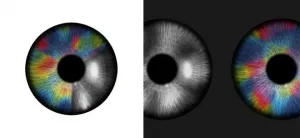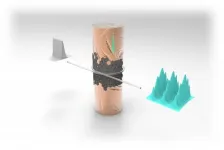(Press-News.org) A team of researchers from RUDN University and RLT suggested restoring normal levels of lymphocytes in patients with COVID-19 and other viral diseases by subjecting them to the combined influence of light, magnetic field, and ultrasound. The results of the study were published in the Journal of Photochemistry and Photobiology B: Biology.
Some COVID-19 patients are asymptomatic, while others suffer from complications. To effectively fight coronavirus with drugs and therapeutic methods, scientists and medics have to find out what causes these differences in the course of the disease. A team of scientists from RUDN University together with their colleagues from the international company Radiant Life Technologies (RLT) suggested that the reason might lie in the gradual depletion and death of lymphocytes due to aging, chronic diseases, and stress. However, the population of lymphocytes could potentially be restored with biophysical radiances.
"We have studied COVID-19 immunopathology from the point of view of bioenergetics to better understand the biophysical grounds of immune processes. We believe that specific cell functions depend on the kinetics of basic cell life support," said Prof. Oksana Gizinger, a Ph.D. in Biology from the Department of Immunology and Allergology, Institute of Medicine at RUDN University.
The term 'bioenergetics' is often used by psychics and adepts of alternative medicine to describe such notions as auras or biofields. However, in fundamental science, it means a field of knowledge about energy exchange within living systems and between them and the environment. Having studied the immune cells of coronavirus patients, scientists found a correlation between bioenergetics and immune system reactions. For example, to develop an adequate immune response, activated T lymphocytes require dozens of times more energy than to remain in their regular state. However, when a body's energy reserves are depleted, T lymphocytes cannot function properly and the levels of exhaustion markers PD-1, TIM-3, CTLA-4, and TIGIT increase from their minimum in the asymptomatic period to the maximum when a patient is admitted to ICU. In severe cases, the lymphocyte count decreases to 5-15%. If the situation does not improve within a week, the risk of fatality is extremely high.
Having analyzed scientific literature, the team found out that the outcome of the disease could be predicted with 90% accuracy using just two parameters: the level of lactate dehydrogenase and the reduction of lymphocyte count. The researchers suggested that the depletion of the lymphocyte population caused by systemic energy deficiency could cause adaptive immunity disfunction. The bodies of elderly people, patients with chronic diseases, or those under stress fail to meet the increased energy demands of the immune system which leads to a more serious progression of the disease. If this assumption is correct, the problem could be solved by stimulating lymphocyte regeneration.
According to the team's hypothesis, this could be achieved by treating the cells with four types of biophysical radiances at once: laser, monochromatic light, magnetic field, and ultrasound. Presumably, when properly combined, these radiances could support the regeneration of lymphocytes.
"We believe that a combination of these biophysical radiances could help restore the cells, improve the work of the immune system, and speed up the recovery. Our coherent multi-radiance (coMra) technology combines infrared, laser, visible monochromatic, magnetic, and ultrasonic radiances in one device. Together, they stimulate cellular functions, such as immune defense and tissue regeneration," added Arzhan Surazakov, Ph.D., Director of Research and Development at Radiant Life Technologies.
INFORMATION:
A scientific study carried out by the Universidad Carlos III de Madrid (UC3M) and the Universidad Complutense de Madrid (UCM) has produced a mathematical description of the way in which a tumor invades the epithelial cells and automatically quantifies the progression of the tumor and the remaining cell islands after its progression. The model developed by these researchers could be used to better understand the biophysical characteristics of the cells involved when developing new treatments for wound healing, organ regeneration, or cancer progression.
This research analyses the collective ...
An Academic Analytics Research Center (AARC) study has found greater rates of authorship of open access (OA) research articles among scholars at more prestigious institutions with greater access to resources and job security. "The open access publishing model is growing, and open access successfully democratizes the results of research projects, but it's clear now that some scholars are more likely to be represented in the open access literature" said AARC director and lead author of the study Anthony Olejniczak, Ph.D.
The researchers analyzed characteristics of 182,320 open access authors at American research universities from 2014 through 2018. The study ...
In a series of experiments with laboratory-cultured bacteria, Johns Hopkins scientists have found evidence that there is a second role for the widely used gene-cutting system CRISPR-Cas9 -- as a genetic dimmer switch for CRISPR-Cas9 genes. Its role of dialing down or dimming CRISPR-Cas9 activity may help scientists develop new ways to genetically engineer cells for research purposes.
A summary of the findings was published Jan. 8 in Cell.
First identified in the genome of gut bacteria in 1987, CRISPR-Cas9 is a naturally occurring but unusual group of genes with a potential for cutting DNA sequences in ...
Cerebral infarction, commonly known as ischemic stroke, has a high mortality rate and causes severe damage to nervous cells in the brain owing to the loss of oxygen, which results in limiting body movements. Several technologies, including physiotherapy and brain stimulation techniques, are being developed and tested for the rehabilitation of brain nervous cells damaged by a stroke. In particular, low-intensity focused ultrasound is expected to be effective for rehabilitating neurological diseases such as stroke, as it can excite or inhibit nerve cells by delivering mechanical energy with high precision at the desired position, while ultrasound is penetrating the cranium without requiring a surgical operation.
Korea Institute of Science and Technology (KIST) announced that the research ...
Why is studying spin properties of one-dimensional quantum nanowires important?
Quantum nanowires-which have length but no width or height-provide a unique environment for the formation and detection of a quasiparticle known as a Majorana zero mode.
A new UNSW-led study overcomes previous difficulty detecting the Majorana zero mode, and produces a significant improvement in device reproducibility.
Potential applications for Majorana zero modes include fault-resistant topological quantum computers, and topological superconductivity.
MAJORANA FERMIONS IN 1D WIRES
A Majorana fermion is a composite particle that is its own antiparticle.
Antimatter explainer: Every fundamental particle has a corresponding antimatter particle, with ...
A KAIST team's mathematical modelling shows that the topographic tiling of cortical maps originates from bottom-up projections from the periphery.
Researchers have explained how the regularly structured topographic maps in the visual cortex of the brain could arise spontaneously to efficiently process visual information. This research provides a new framework for understanding functional architectures in the visual cortex during early developmental stages.
A KAIST research team led by Professor Se-Bum Paik from the Department of Bio and Brain Engineering has demonstrated that the orthogonal organization of retinal mosaics in the periphery is mirrored onto the primary visual cortex and initiates ...
Overview:
Third-year doctoral student Toshiaki Takahashi, associate professor Kazuhiro Takahashi, and their research team from the Department of Electrical and Electronic Information Engineering at Toyohashi University of Technology developed a testing chip using semiconductor micro-machining that can detect volatile gasses in exhaled breath in ppm concentrations at room temperature. A polymer that expands and contracts when gas is absorbed is formed on a flexibly deformable nanosheet, and the amount of deformation that occurs when a target gas is absorbed is measured, allowing gas to be detected at high sensitivity. ...
New research shows that patterns inspired by lobster shells can make 3D printed concrete stronger, to support more complex and creative architectural structures.
Digital manufacturing technologies like 3D concrete printing (3DCP) have immense potential to save time, effort and material in construction.
They also promise to push the boundaries of architectural innovation, yet technical challenges remain in making 3D printed concrete strong enough for use in more free-form structures.
WATCH AND EMBED THE VIDEO: https://youtu.be/mpPAPlst42o
In a new experimental study, researchers at RMIT University ...
Pulsed lasers repeatedly emit light for a short period of time as if blinking. They have the advantage of focusing more energy than a continuous wave laser, whose intensity is kept unchanged over time. If digital signals are loaded in a pulsed laser, each pulse can encode one bit of data. In this respect, the higher the repetition rate, the more the amount of data that can be transmitted. However, conventional optical-fiber-based pulsed lasers have typically had a limitation in increasing the number of pulses per second above the MHz level.
The Korea Institute of Science and Technology (KIST) announced that the research ...
Synthetic cannabidiol, better known as CBD, has been shown for the first time to kill the bacteria responsible for gonorrhoea, meningitis and legionnaires disease.
The research collaboration between The University of Queensland and Botanix Pharmaceuticals Limited could lead to the first new class of antibiotics for resistant bacteria in 60 years.
The UQ Institute for Molecular Bioscience's Associate Professor Mark Blaskovich said CBD - the main nonpsychoactive component of cannabis - can penetrate and kill a wide range of bacteria including Neisseria gonorrhoeae, which causes ...
